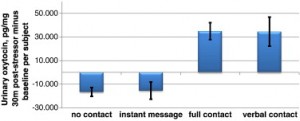Many of us are aware of the debate on whether dinosaurs were cold-blooded or warm-blooded. Who would have thought that one day we could measure the temperature of dinosaurs? For many years, we could only hypothesize the shape, appearance, and diet of dinosaurs. Previously, little is known about these long extinct creatures, but now we can finally test certain aspects of these creatures including their body temperatures.
Recently, a team of researchers led by the California Institute of Technology (Caltech) have found a way to measure dinosaurs’ body temperature by analyzing their teeth.
“The main reason to do this sort of work is because gigantic land animals are intrinsically fascinating,” said lead study researcher John Eiler, a professor of geology and geochemistry at Caltech.“We want to look at where warm-bloodedness emerged, and where it didn’t emerge. And this technique will help us to reconstruct food webs.”
By measuring the concentrations of carbon-13 and oxygen-18 isotopes preserved in mineral bioapatite found in the teeth of dinosaurs, an estimated temperature can be recorded. These two isotopes preferentially bond together to form clusters at lower temperature and will form larger clusters when temperature is decreased. Thus, by analyzing the concentration of these isotopes, reasonably precise temperatures can be measured (accurate within 1-2 °C). The researchers analyzed 11 teeth from Brachiosaurus brancai and Camarasaurus and recorded body temperatures ranging from 36-38 °C.
If they are warmer than modern reptiles, does that mean they are warm blooded? Not really, according to the gigantothermy phenomenon it is possible that due to the dinosaur’s huge sizes they could be cold blooded with a warm body temperature. The temperature is dependent on their metabolic design of generating heat from high metabolism or absorbing heat from outside the body and maintaining a low metabolism.
Although the debate is still ongoing, I believe that with more research and time, the answer to this mystery will come in the near future. From this new finding, we obtained a clearer understanding of the physiology of these extinct creatures; however, I do feel it is unfortunate to damage or destroy these teeth sample used in the experiments. All the fossils used in the experiment are subjected to grinding into powders in order to extract the isotopes. It is unfortunate to use such a method, as the fossils are hard to obtain and in some cases extremely rare. Although this finding is interesting, I feel it is unnecessary to damage such rare fossils.
Video about John Eiler and his research: 
References:
-
Images: “How To Take a Dinosaur’s Temperature”
-
Wikipedia
-
Youtube

















